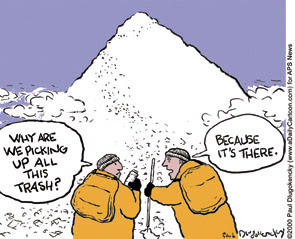Yes it does.
A recent MRI study from Spain, on 13 climbers which scaled Mt. Everest (a subset of 36 combined elite and amateur climbers in all) showed irreversible damage in the brain of 12 climbers ranging from Virchow-Robin (VR) space widening and subcortical lesions.
VR spaces are space near the blood brain barrier that drain brain fluid and communicates it with the lymphatic system. Enlargement of this space is seen in elderly but not in young individuals.
This type of brain damage has long been associated with hypoxia– a common experience among high altitude climbers.
So who’s at risk? The study showed amateur climbers are at risk and chronic exposure to high altitude hypoxia, usually seen among elite climbers, DOESN’T SEEM to play a big role in the damage.
But how high is high altitude? Of course Mt. Everest is extreme. But in a similar study on people that climbed Mt. Aconcagua and Mt. Mont Blanc, similar irreversible brain damage has been seen on climbers who went as low as 4,810 meters.
Well, Philippine peaks are way below this level ( Mt. Apo is just near 3,000 meters ASL)but somehow, it gives us an idea how important proper conditioning and acclimatization is in high altitude activities.






